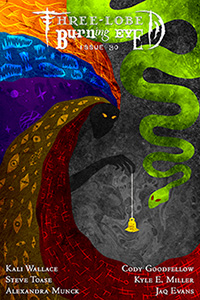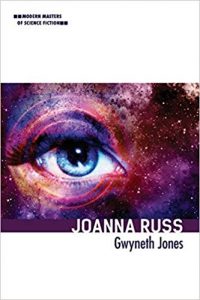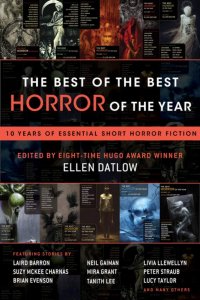Paula Guran Reviews Short Fiction: Black Static, The Dark, Nightmare, Uncanny, and 3LBE
 Black Static 9-10/19
Black Static 9-10/19
The Dark 9/19, 10/19
Nightmare 10/19
Uncanny 9-10/19
Three-lobed Burning Eye 8/19
Black Static #71 is a stellar issue. If you’ve never sampled the UK periodical, this is the place to start. Felix, in Stephen Hargadon‘s novelette “Dixon Parade“, is a lonely, melancholy middle-aged man who never really moved on after his divorce. He purchases an early-’80s painting of a suburban street scene and begins to see and hear weird things in the artwork. His world begins to bend out of shape as the “fantastic creeps in from the edges…. There is drama and despair in every tin of beans.” His decline is noticeable and a friend finds the real place portrayed in the painting. Felix visits. Fine writing and detailed characterization makes the unreal creepily real.
The narrator in “Diamond Saw” by Sarah Read has always been in the family business and still is, even with Dad dead. Well, not exactly dead: he’s somehow inhabiting her fetus and telling her what to do from the womb. Baby Dad not only advises on whom to wipe out, but gives pregnancy diet advice too. Wonderfully original premise very well done.
Angie, in “Residue” by Steven Sheil, is defrosting the freezer in her dead brother’s flat. Memories both good and bad haunt her, but there’s something a great deal worse than recollections and ice clogs left in the place. It builds to a horrific ending, but have we learned enough about the brother to sustain it?
In “A Pressed Red Flower in the Abandoned Archive” by Daniel Bennett, the narrator – while working for an obscure research unit – inadvertently discovers a file of unrelated sentences that contain occasional details that seem personal. Unable to save the file, it is lost forever when the computer crashes again. They become more than obsessed about finding it again. Short and slickly done.
Novelette “Other Houses” by Seán Padraic Birnie offers yet another nameless narrator. This one is a 40-year-old woman who has vivid memories that neither her younger sister nor elderly father recall. After her father’s death, she views photos of an important event of which she has no memory. She feels she is losing purchase on the world and herself. Birnie builds this dissonance masterfully into disconcerting dread.
Gillian Daniels‘s “Brigid Was Hung by Her Hair from the Second Story Window” in The Dark #52 is a story with the power and the poetry of a true Gaelic bard. Brigid leaves Ireland and marries an abusive man in America. Brigid’s mother named her for the old goddess rather than the Christian saint, so to make her escape she prays to her mother’s goddess and writes a song that she must live. Brigid finds a new life and happiness, but knows a “good ballad ends with tragedy…” and hers does. “The Price of Knives” by Ruoxi Chen is a lovely – albeit dark – mermaid story, with excellent imagery enhanced by the use of Chinese here and there in description and dialogue.
The Dark #53: In “On Full Moon Nights” by Idza Luhumyo, a dead girl, Kasicha, only comes to the living girl Tatu when “the moon is full and the tide high enough to throw her out of the water.” The girls fly about, spreading fear and wreaking havoc on those whom did Kasicha wrong in life. A group of women meets to bring balance back to their village and magically end the cycle of wrongness. A haunting tale, poetically wrought. A lighter story, “Authentic Zombies of the Caribbean” by Ana María Shua (translated by Andrea G. Labinger) presents the Ramos family, Argentinians visiting Disney World. Another local attraction, a “voodoo extravaganza for the whole family/Featuring genuine Caribbean zombies!”, is an experience never found in the safety of Disney – especially for young Gonzalo, who, in the story’s punchline, is left with a unique souvenir.
Nightmare #85 has two winning stories. “Some Kind of Blood-Soaked Future” by Carlie St. George is a darkly humorous, entertaining tale of a teen who is the only survivor of a slumber party massacre. She embraces a new life as a monster-slayer: “it’s hard and it’s sad, but mostly it works. Virginity, though, is still your superpower. It doesn’t keep you alive, but it improves your chances. It means you can kill the monster, or die trying.” Shades of Buffy the Vampire Slayer, with a happy ending. Merc Fenn Wolfmoor‘s “Sweet Dreams Are Made of You” is a disquieting story about a game, Vore, played by two people within dreams. The game begins with the appearance of a girl who devours you. Things get surreally weirder from there. Hallucinogenic horror well done.
Uncanny #30: Disabled People Destroy Fantasy is intended to be both a celebration of and a stimulus for recognition and accommodation of disability. “Tower” by Lane Waldham is a version – really several versions as there’s something of a “choose-your-own-adventure” style – of “Rapunzel”. The mother-witch and daughter relationship is the core of the story: both are trapped. The tower’s isolating metaphor is enhanced by Waldham’s portrayal of hair growing everywhere and of the young woman’s tresses as an impossibly snarled mess. Magic hair can’t just be cut it off with no consequences, of course. The author balances wit with symbolism and offers multiple possible outcomes for the story (but the positive wins out).
In “Seed and Cinder” by Jei D. Marcade, Geon is a helpful immortal creature who will someday swallow the sun. He has, for many years, outlived his human companions. Will the current human, the perceptive but lonely Kyoseong, join them? I enjoyed the rapport between Geon and Kyoseong in this insightful (and humorous) story about life and death, monsters and monstrosity. You can probably see the ending two ways here, which is fine.
Ayash U. Farah‘s “The Tailor and the Beast” is another retold fairy tale. This time, a failed tailor exchanges himself for his daughter and becomes the beast’s prisoner. Both beast and man are depressed. Even though the tailor has found a fulfilling way to spend his time, he misses his daughter and other humans. Eventually, the tailor’s kindness transforms all. It would have been nice to see more interaction between the man and the beast before the sudden, if happy, ending, but then Beaumont’s 1756 version of Villeneuve’s 1740 “La Belle et la Bête” cuts that all out, too.
Sarah Gailey‘s “Away With the Wolves” has an interesting concept. Suss is pain-free in lupine form but, as a human, her body hurts in multiple excruciating ways. When she’s a wolf, Suss, from the point of view of humans, is destructive, but she makes amends by replacing wrecked property and slayed livestock. She’s the only wolf/person in the area and has good human friends like Yanna. Why not just stay a wolf? Guilt. Her late mother convinced her “that escaping into my other self is lazy. It’s selfish… and there’s always a price to pay for selfishness.” Real redemptive suffering – minus the Christianity! Things have to change for Suss, and they do, but the change is a little too pat and easily accomplished.
Cleaning out his recently deceased mother’s home is too much for Kevin in “This Is Not My Adventure” by Karlo Yeager Rodriguez. He goes through a wardrobe to a place most fantasy readers will recognize, but he can’t stay. Kevin is so weighed down by depression he can’t function, but old friends come through (the wardrobe) to help. Clever use of fantasy, but a complex problem is simply tidied up by magic.
I read “The Fifth Day” by Tochi Onyebuchi several times. It involves an ogbanje who must find its iyi-uwa and destroy it to be free. I know that in Chinua Achebe’s Things Fall Apart (and Igbo mythology), an ogbanje is an “evil” child/spirit who dies and returns to its mother’s womb to be reborn again and again. This brings great grief and bitterness. The cycle can be broken if the ogbanje‘s iyi-uwa – a totem it has hidden – is found and destroyed. The child will then live. This knowledge helps in understanding, and there’s an undeniable sense of power in Onyebuchi’s story, but I needed more to truly appreciate it.
Three-lobed Burning Eye #30 is an online magazine of horror, wonder, and the weird. Their publishing schedule is twice yearly, but I believe this fall issue is the first since May 2018 and the one before that was in October 2016. Steve Toase‘s “The Silent Brush of Wings” tells of Mila who tends butterflies made of “copper and data, insects bred for storage” that, together form a server. Data is elegantly transferred by the brush of wing against wing, scale against scale. All is threatened when a virus intrudes. Nicely done, but there’s no world-building to account for devising Lepidoptera data storage to start with.
In “The Touring Car” by Cody Goodfellow, eight-year-old Ramsey Cobb’s father has been integral in the invention of the Cobb Crusader, a laser-guided touring car that runs on a self-contained fuel cell recharged by the motion of the car. Ramsey and his parents are driving across the US to demonstrate and, ultimately, introduce the car to the public. Bad Guys (you can guess who) don’t want such an invention and will stop at nothing to end it and its inventor. The true horror comes, however, at some point in a future very much in need of the Crusader. Clever, but neither young Ramsey or the Crusader are completely convincing.
An unnamed high schooler has lost his father to the sea in “Scales” by Jaq Evans. Gothy fellow teen Liv – who somehow knows his nightmares – claims to be able to find the father, even though he is no longer alive. Liv promises the “father back and safe, your mother like you’ve dreamed her, and all this yours to keep.” Naturally, a bargain is involved. Although briefly sketched, the two characters are credible and the story compelling.
Kali Wallace crafts a rewarding tale with “The Virtue Retreats from the Land of Snow and Sky“. Pareetha has lived through two decades of nightmarish war and occupation, but the invader, The Virtue, has not conquered Sufa, an icy witching land. Pareetha’s village is the final stop before he and the remains of his army leave Sufa for good. Of all that has been lost, the most important are the powerful teachings of her ancestors, which died with wise women including Pareetha’s own mother. Or did it? A sad but triumphal story that is retold, one way or another, whenever war is waged.
Kyle E. Miller‘s “Ringing the Changes” is an existential fantasy-adventure story of sorts. Photographer Limpak, bureaucrat Antonov, and a nameless narrator who is a campanologist have only three hours to reach the “bells of the deep” before they ring. If they fail, their civilization will suffer an endless full peal that will shake them “all to pieces.” They descend through fetid swamps into the final abyss.
Some say the bleaching is just a rumor. Or, if it exists, immigrants brought it. Emily, in “Beast Do” by Alexandra Munck, believes it is true and she knows no immigrants can be blamed. Bleaching is an odd apocalypse: “colors go off. They get too bright and flatten out, one by one, before slowly draining away. Then everything freezes, completely clear and smooth. Dead glass.” When the bleaching starts to come to Emily’s shop, she takes off. What she eventually finds there seems almost to belong in another story. I can’t quite decide if Munck has succeeded with a cohesive but surrealistic tale here, but I’m likely to remember it.
Paula Guran has edited more than 40 science fiction, fantasy, and horror anthologies and more than 50 novels and collections featuring the same. She’s reviewed and written articles for dozens of publications. She lives in Akron, Ohio, near enough to her grandchildren to frequently be indulgent.
This review and more like it in the December 2019 issue of Locus.
 While you are here, please take a moment to support Locus with a one-time or recurring donation. We rely on reader donations to keep the magazine and site going, and would like to keep the site paywall free, but WE NEED YOUR FINANCIAL SUPPORT to continue quality coverage of the science fiction and fantasy field.
While you are here, please take a moment to support Locus with a one-time or recurring donation. We rely on reader donations to keep the magazine and site going, and would like to keep the site paywall free, but WE NEED YOUR FINANCIAL SUPPORT to continue quality coverage of the science fiction and fantasy field.







